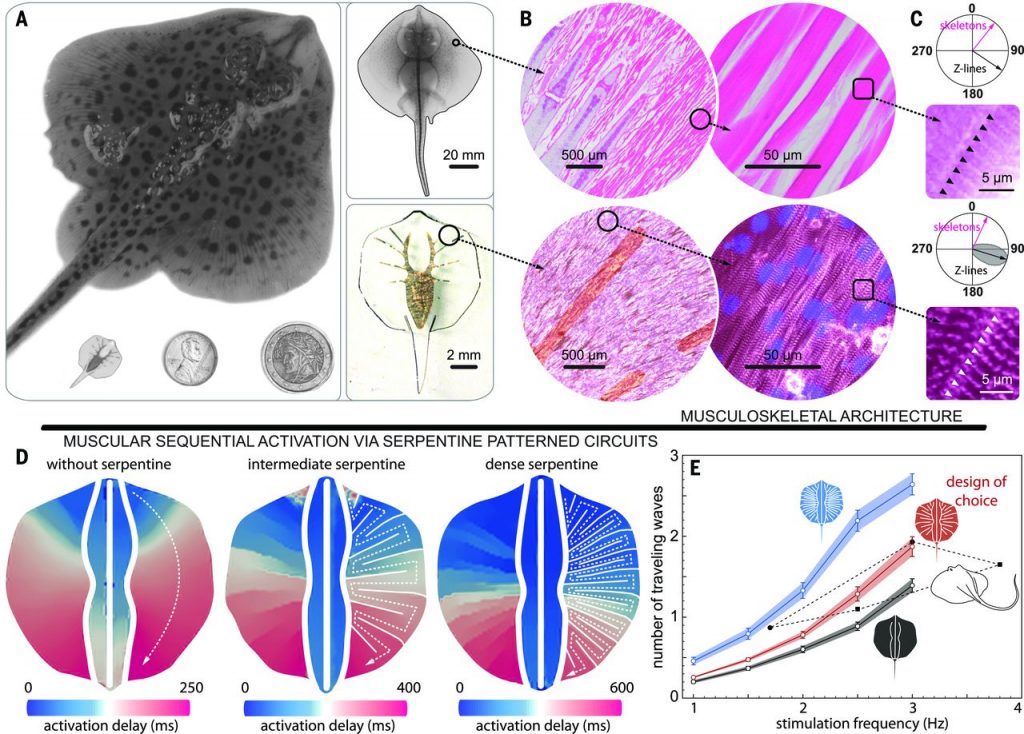A team of scientists invested a great amount of work in developing a soft-robot ray that mimics the movements of its role model.
The small stingray consists of a gold skeleton and heart cells. These cells were manipulated so they would react to light. The cells were than grown in a zigzag pattern around the metal skeleton. Two sheets of silicone shaped this pattern.
Kedi Xu, a neural engineer at Zhejiang University in Hangzhou, Chine:
“One can imagine that one day we can use this technology to rebuild parts of the human body.”
The design of the artificial soft-robot:
When lit the heart muscles move like a real stingray would move. The researchers were able to move the stingray through a underwater parkour.
Read more about the scientists work in the journal Science.
Sung-Jin Park, Mattia Gazzola, Kyung Soo Park, Shirley Park, Valentina Di Santo, Erin L. Blevins, Johan U. Lind, Patrick H. Campbel, Stephanie Dauth, Andrew K. Capulli, Francesco S. Pasqualini, Seungkuk Ahn, Alexander Cho, Hongyan Yuan, Ben M. Maoz, Ragu Vijaykumar, Jeong-Woo Choi, Karl Deisseroth, George V. Lauder, L. Mahadevan and Kevin Kit Parker from the Universities of Illinois, Michigan, Rode Island, The Winsor School (Boston) and Stanford worked on this project.
Subscribe to our Newsletter
3DPresso is a weekly newsletter that links to the most exciting global stories from the 3D printing and additive manufacturing industry.






















